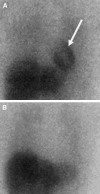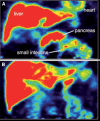Parkinson's: a syndrome rather than a disease?
- PMID: 28028643
- PMCID: PMC5514217
- DOI: 10.1007/s00702-016-1667-6
Parkinson's: a syndrome rather than a disease?
Abstract
Emerging concepts suggest that a multitude of pathology ranging from misfolding of alpha-synuclein to neuroinflammation, mitochondrial dysfunction, and neurotransmitter driven alteration of brain neuronal networks lead to a syndrome that is commonly known as Parkinson's disease. The complex underlying pathology which may involve degeneration of non-dopaminergic pathways leads to the expression of a range of non-motor symptoms from the prodromal stage of Parkinson's to the palliative stage. Non-motor clinical subtypes, cognitive and non-cognitive, have now been proposed paving the way for possible subtype specific and non-motor treatments, a key unmet need currently. Natural history of these subtypes remains unclear and need to be defined. In addition to in vivo biomarkers which suggest variable involvement of the cholinergic and noradrenergic patterns of the Parkinson syndrome, abnormal alpha-synuclein accumulation have now been demonstrated in the gut, pancreas, heart, salivary glands, and skin suggesting that Parkinson's is a multi-organ disorder. The Parkinson's phenotype is thus not just a dopaminergic motor syndrome, but a dysfunctional multi-neurotransmitter pathway driven central and peripheral nervous system disorder that possibly ought to be considered a syndrome and not a disease.
Keywords: Individualized medicine; Neurotransmitter; Non-motor subtypes; Non-motor symptoms; Parkinson’s disease; Parkinson’s syndrome.
Figures






References
-
- Adler CH, Dugger BN, Hentz JG, Hinni ML, Lott DG, Driver-Dunckley E, Mehta S, Serrano G, Sue LI, Duffy A, Intorcia A, Filon J, Pullen J, Walker DG, Beach TG. Peripheral synucleinopathy in early parkinson’s disease: submandibular gland needle biopsy findings. Mov Disord. 2016;31(2):250–256. doi: 10.1002/mds.26476. - DOI - PMC - PubMed
-
- Chaudhuri KR, Fung VSC. Fast facts: Parkinson’s disease. 4. Oxford: Health Press Limited; 2016.
-
- Erro R, Vitale C, Amboni M, Picillo M, Moccia M, Longo K, Santangelo G, De Rosa A, Allocca R, Giordano F, Orefice G, De Michele G, Santoro L, Pellecchia MT, Barone P. The heterogeneity of early Parkinson’s disease: a cluster analysis on newly diagnosed untreated patients. PLoS One. 2013;8(8):e70244. doi: 10.1371/journal.pone.0070244. - DOI - PMC - PubMed
Publication types
MeSH terms
LinkOut - more resources
Full Text Sources
Other Literature Sources
Medical

